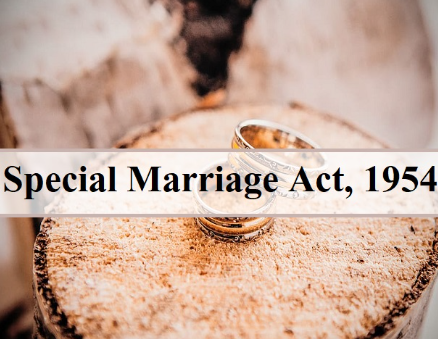The Special Marriage Act, 1954 (GS Paper 2, Judicial Review)

Introduction:
- The recent verdict by the Madhya Pradesh High Court regarding a marriage under the Special Marriage Act (SMA) has reignited discussions about the interplay between personal laws and civil legislation in India.
- This article provides an overview of the Special Marriage Act, its significance, and the challenges it presents, especially concerning interfaith marriages.
Understanding the Special Marriage Act, 1954:
- The Special Marriage Act was enacted in 1954 to facilitate civil marriages, allowing couples of different religions or castes to marry without converting or adhering to religious ceremonies.
- It serves as a secular alternative to traditional religious ceremonies governed by personal laws like the Hindu Marriage Act or the Muslim Marriage Act.
Key Provisions and Procedure:
Under the SMA, couples from diverse religious backgrounds can solemnize their marriage by following a simple procedure:
- Notice of Intended Marriage: Couples must give a written notice to the Marriage Officer of their district at least 30 days before the marriage.
- Declaration and Witnesses: Before solemnizing the marriage, the couple and three witnesses must sign a declaration form.
- Certificate of Marriage: Upon completion of formalities, the Marriage Officer issues a certificate, legally validating the marriage.
Recent Judgement and Controversies:
- The recent ruling by the Madhya Pradesh High Court, dismissing the petition of a Muslim man and Hindu woman seeking protection for their SMA-registered marriage, has stirred controversy.
- The court's decision, citing personal laws' precedence over civil legislation, underscores the challenges faced by interfaith couples.
Concerns Associated with the Special Marriage Act:
While the SMA offers a progressive approach to marriage, it is not without flaws:
- Objections to Marriage: Section 7 allows for objections to be raised within 30 days of notice publication, potentially leading to harassment and delays.
- Privacy Concerns: Mandatory publication of marriage notices raises privacy issues, exposing couples to societal scrutiny and interference.
- Social Stigma: Interfaith marriages, despite legal provisions, still encounter social stigma and familial opposition in many parts of India.
Legal Precedents and Constitutional Rights:
- The Supreme Court has upheld the right to marry a person of one's choice as a fundamental right under Article 21 of the Constitution.
- Landmark cases like Lata Singh v. State of U.P. and Shakti Vahini v. Union of India affirm the individual's freedom to choose their life partner, irrespective of religious or caste considerations.
Conclusion:
- The Special Marriage Act stands as a beacon of secularism, offering a pathway for couples to exercise their fundamental rights and transcend religious barriers.
- However, the recent legal developments underscore the need for greater clarity and consistency in the application of civil laws concerning marriage.
- As India progresses towards a more inclusive society, it is imperative to address the legal complexities and societal attitudes that impede the freedom of choice and expression in matters of matrimony.


